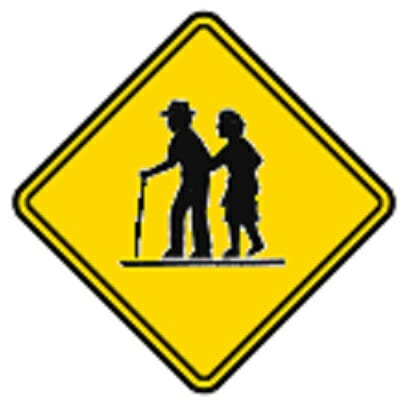- Course No E – 1536
- PDH Units 7.00
No data found for Custom Course Number
No data found for Custom Course Units
- Course No E – 1536
- PDH Units 7.00
Intended Audience: civil and transportation engineers concerned with the design and maintenance of road systems
PDH UNITS: 7
The increasing number of older drivers using U. S. highways in the decades ahead will pose many challenges for transportation engineers. The 65 and older age group will exceed 50 million by 2020, accounting for roughly one-fifth of the population of driving age. In effect, if design is controlled by even 85th-percentile performance requirements, the “design driver” of the early 21st century will be an individual over the age of 65. In 1998, FHWA published the Older Driver Highway Design Handbook, seeking to provide highway engineers with practical information linking the declining functional capabilities of older road users to the need for design, operational, and traffic engineering enhancements keyed to specific roadway features. Early experiences with the recommendations, including extensive feedback from local- and State-level practitioners through workshops conducted for departments of transportation across the country in 1999 and 2000, indicated a need to revise and update this resource. The result is a new handbook, the Highway Design Handbook for Older Drivers and Pedestrians, published in 2001. This course contains updated recommendations excerpted from the 2001 handbook. The recommendations do not constitute a new standard of required practice but are instead intended to supplement existing standards and guidelines in the areas of highway geometry, operations, and traffic control devices. The recommendations provide guidance that is firmly grounded in an understanding of older drivers’ and pedestrians’ needs and capabilities, and can significantly enhance the safety and ease of use of the highway system for older persons, and for the driving population as a whole. The course also provides supplemental technical information not found in the full handbook. The information is provided to explain (1) how specific diminished capabilities lead to age-related driving problems; (2) license renewal requirements and distinctions for older drivers in each State in the U.S.; and (3) how and why to conduct visibility measurements to ensure that various pavement marking treatments covered in the Handbook serve the needs of older road users. These materials are included to support practitioners in exercising the engineering judgment often called upon to reach implementation decisions. This course is based on the FHWA document FHWA-RD-01-051, “Guidelines and Recommendations to Accommodate Older Drivers and Pedestrians,” written by L. Staplin, K. Lococo, S. Byington, and D. Harkey, May, 2001.
Learning Objectives
At the successful conclusion of this course, you’ll be able to identify and discuss:- Relating recommendations to standard design guides
- Determining when to implement recommendations
- Recommendations, by design element, for at-grade intersections
- Recommendations, by design element, for interchanges with grade separation
- Recommendations, by design element, for roadway curvature and passing zones
- Recommendations, by design element, for construction and work zones
- Recommendations, by design element, for highway-rail grade crossings
- Aging and driver capabilities
- Drivers’ license renewal requirements by State
- Techniques for measuring the visibility of highway treatments
Once completed, your order and certificate of completion will be available in your profile when you’re logged in to the site.










